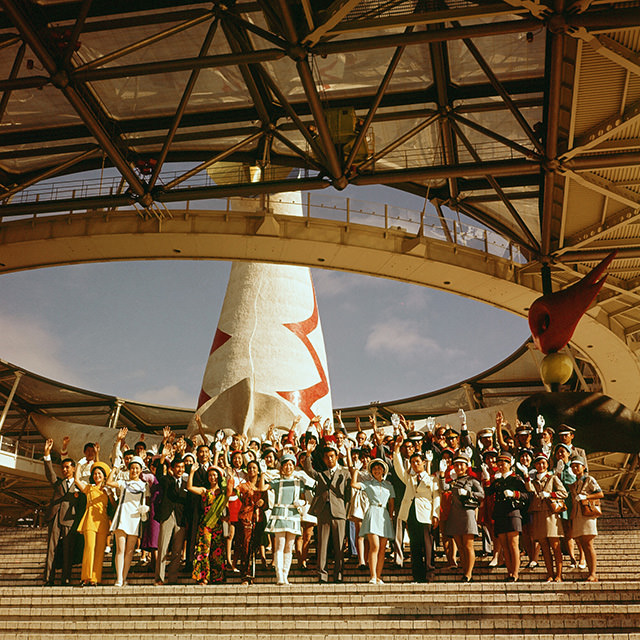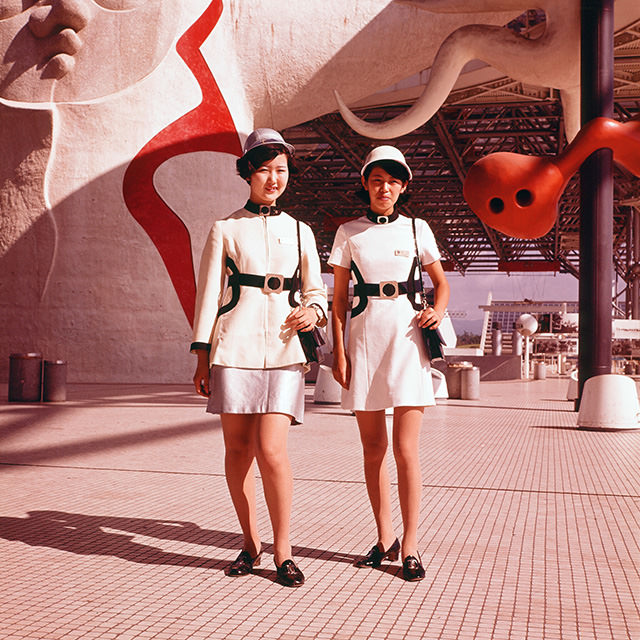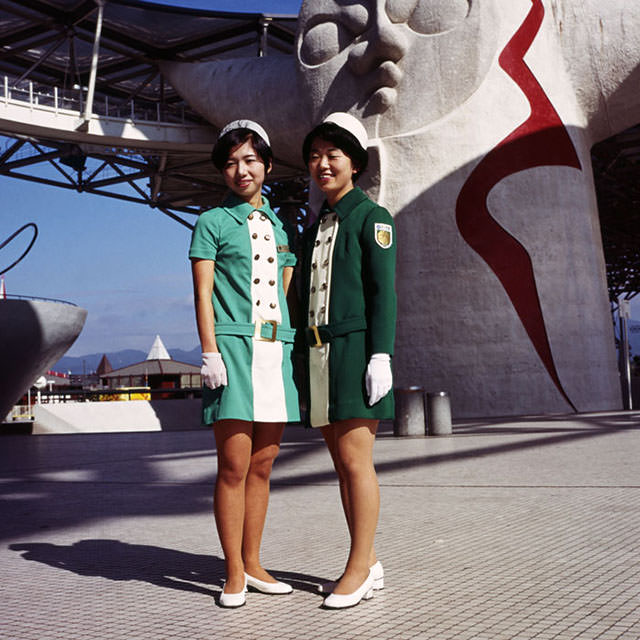About Expo ’70 in Osaka
Going Back to 1970

The Japan World Exposition, Osaka, 1970 (Osaka's Expo '70), in which 77 countries (including Japan) participated, ended in success, drawing a total attendance of more than 64 million. The total attendance at Expo '70 remained the largest among all world fairs until the Shanghai World Expo surpassed it in 2010.
People have different thoughts and perspectives on Expo '70 in Osaka; while some feel some nostalgia for those days when the world fair was held, there are generations who don't even know about it. However, even today, some 50 years after the Expo was held, the pavilions and the contents of exhibitions at the world fair at the time seem very fresh.
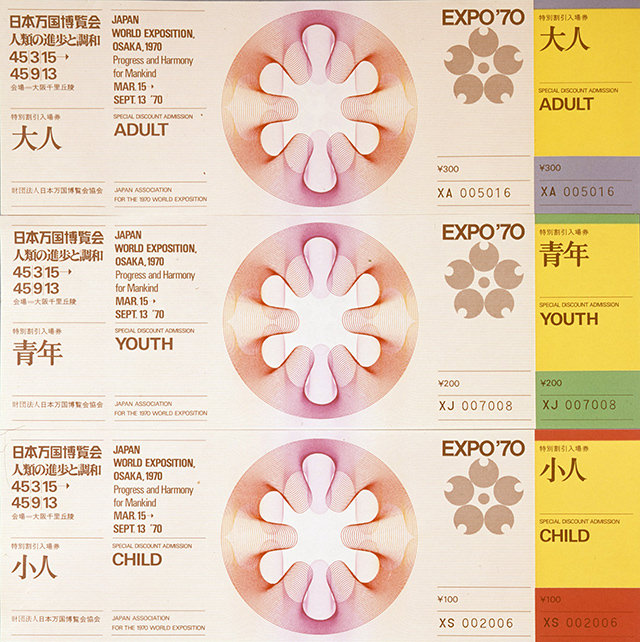
Overview of the Japan World Exposition, Osaka, 1970
| Opening period | From Sunday, March 15, 1970 to Sunday, September 13, 1970 –A total of 183 days |
|---|---|
| Theme | "Progress and Harmony for Mankind" |
| Participants from overseas | 76 countries; 4 international organizations; 1 government (Hong Kong); 3 states, 2 cities, and 2 companies from the United States; 3 provinces from Canada; and 1 city from Germany |
| Domestic participants | 32 organizations – A total of 32 exhibition facilities (Japanese government, Local Government Exhibit Preparatory Committee for the Japan World Exposition, 2 public corporations, and 28 private companies) |
| Total attendance | 64,218,770 Highest single-day attendance: 836,000 * Recorded on Sat., September 5, 1970 Average attendance per day: 350,000 |
| Total land area of the Expo '70 site | 330 ha (83 times larger than Hanshin Koshien Stadium in Hyogo Prefecture) |
| Admission prices | Adults (23 years old or older): 800 yen Young adults (15 to 22 years old): 600 yen Young minors and children (4 to 14 years old): 400 yen * The average monthly salary of people in Japan at that time was 50,000 yen. |
| The Emblem of Expo '70 was designed by: | Mr. Takeshi Otaka |
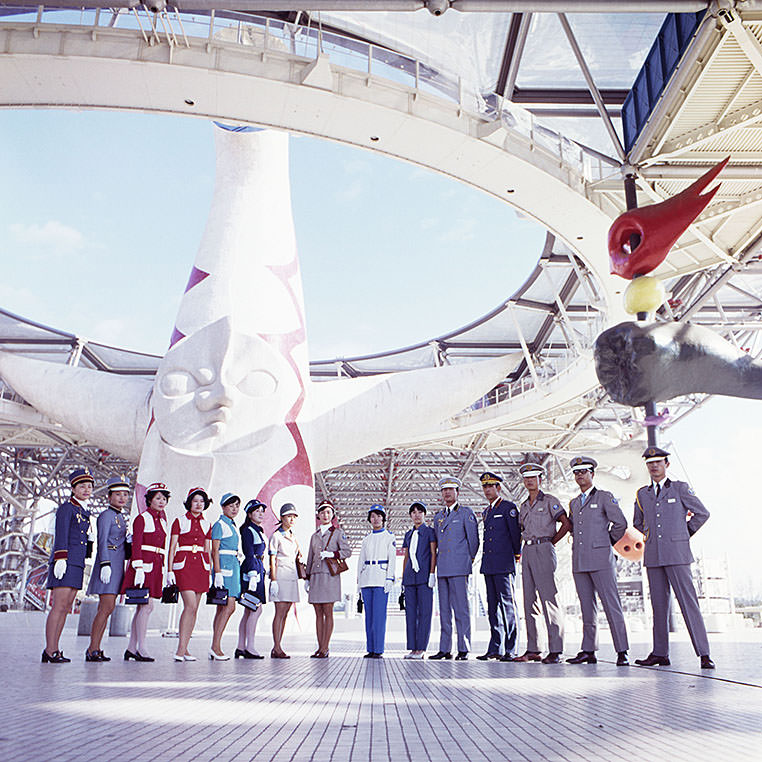
What Does the Theme of Expo '70, "Progress and Harmony for Mankind," Stand For?
At the first world fair in London in 1851 and subsequent world fairs in the early 20th century, new inventions and products appeared one after another against the backdrop of expanding mechanical civilization, and people were stunned by them.
However, by the second half of the 20th century, transportation and communication means had developed, and people were no longer very interested in a world fair that, just like a trade fair, simply displayed creative activities of humans in one location. Therefore, designing a world fair based on a certain concept or theme started to become a new trend.
Against this background, following the example of the Brussels World Fair and the World Fair in Montreal, which had previously been held, at the 1970 Japan World Exposition, it was decided that a central theme (an integrated theme) would be established.
The theme of Expo '70 was "Harmony and Progress for Mankind." At the Expo, it was planned that the progress of technological civilization was not the only thing to be displayed. Focus was also placed on various negative effects and problems that such progress may bring about simultaneously, such as damage to the environment and loss of humanity, and Osaka's Expo '70 was made into an event where people would also think how they could solve these problems and how they could actually succeed in making progresses without losing harmony.
It was decided that the participants in Expo '70 would consider the detailed contents of the exhibitions based on the central theme (the integrated theme). In order to explain it to them more clearly, four pillars (sub-themes) were formed.
Theme (Integrated Theme)
"Progress and Harmony for Mankind"
Four Pillars (Sub-Themes)
[Pillar 1] Have a richer life and achieve better health.
(Relevant subjects)
Origin and mystery of life, healthcare, psychology, childbirth and child-rearing, hobbies, etc.
[Pillar 2] Utilize nature in more prosperous ways.
(Relevant subjects) Farm-raising, growing plants, bringing land into cultivation, energies, seabed resources, weather conditions, etc.
[Pillar 3] Design a better everyday life.
(Relevant subjects) Clothes, foods, residential houses, means of transport, pollution prevention, clocks, etc.
[Pillar 4] Mutually understand each other more deeply.
(Relevant subjects) Language, mass media and journalism, communication, education, family, art, cultural exchange, etc.
Information Regarding the Emblem of Expo '70
- It visualizes the theme of Osaka's Expo '70, "Progress and Harmony for Mankind." The entire emblem depicts sakura (a cherry blossom), which is a flower representative of Japan.
- The five petals of the flower represent the world (the five continents) and express the intentions of the countries in the world to join hands and participate in the Japan World Exposition.
- The circle at the center symbolizes the Hinomaru, the national flag of Japan, and the white areas around it signify the room for development and progresses. In addition, the emblem's overall sense of steadiness indicates dignity and harmony, strongly expressing that the Japan World Exposition 1970 is a world class event.
Creator of the emblem
Mr. Takeshi Otaka, a graphic designer

From Preparation to Closing
Preparation for Expo '70
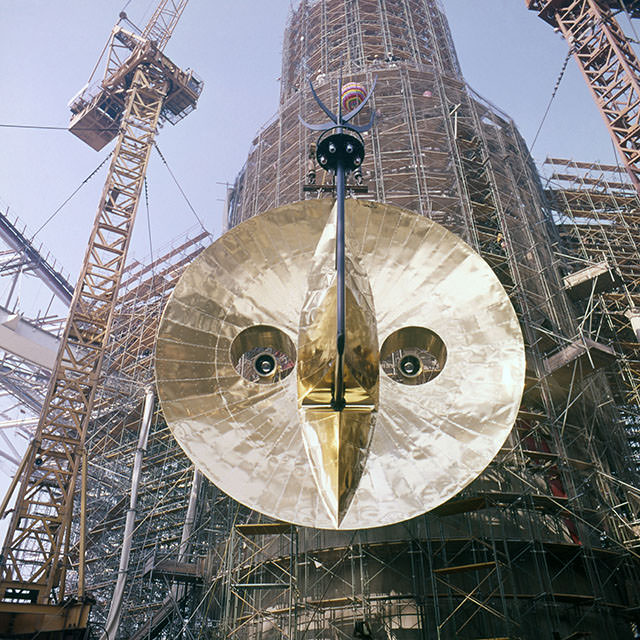
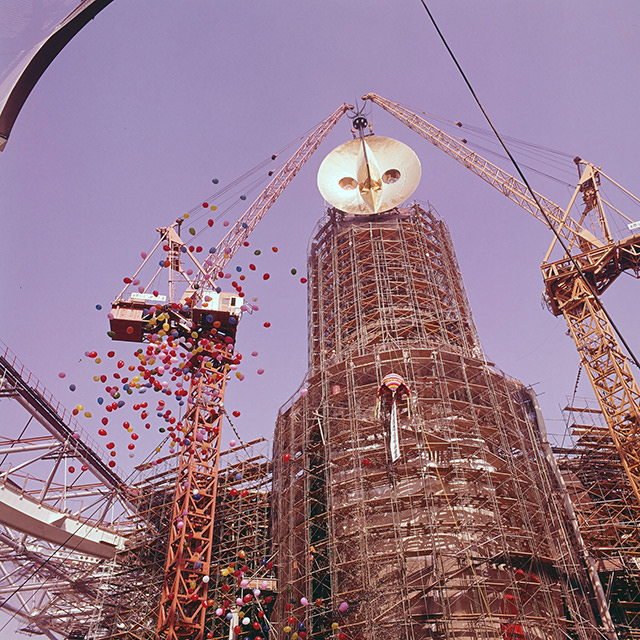
The period of five years and a month – during which Osaka's Senri Kyuryo region (a hilly region across Osaka that includes the site of Expo '70) was developed into a "world class region" – was also an overture to the "Progress and Harmony for Mankind."
Japan acceded to the 1928 Paris Convention on International Exhibitions in February 1965 (Showa Year 40), and in September of the same year, it was officially decided that a world fair would be conducted in Japan. A month later, the [Incorporated Foundation] Japan World Exposition Association was launched, and the actual preparation process for Expo '70 began.
Opening of Expo '70
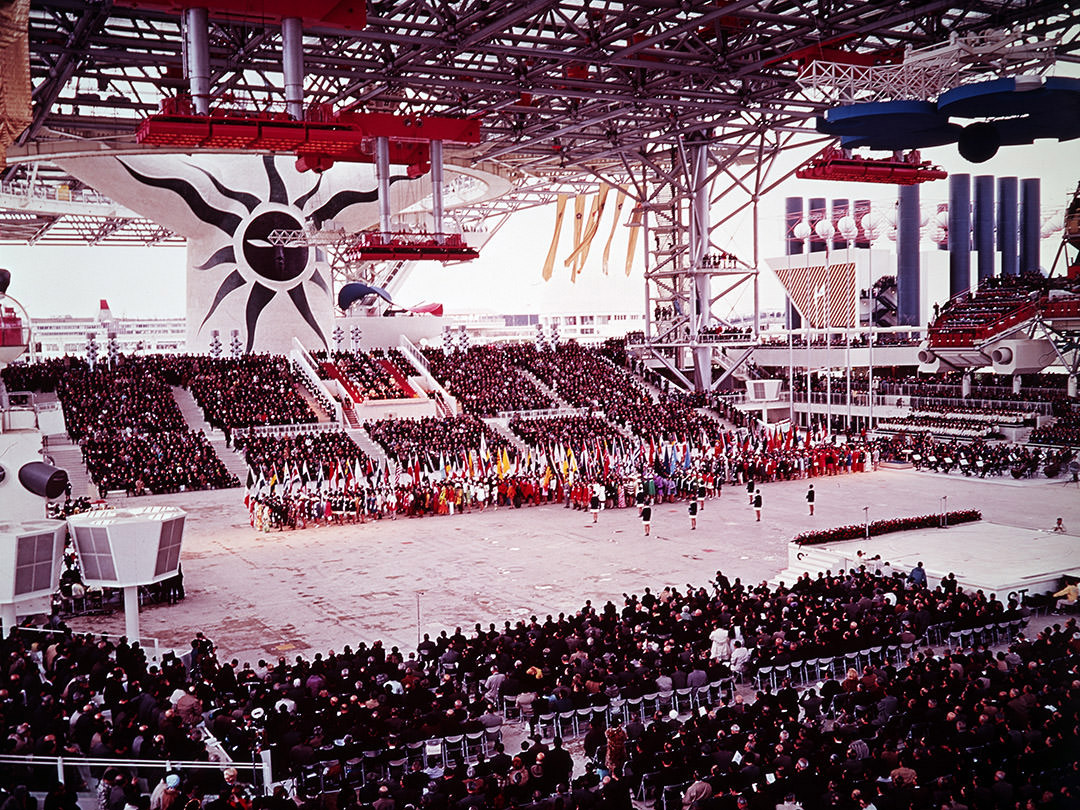
The Japan World Exposition, throughout which lofty ideals were to be pursued, opened brilliantly at 11:00 a.m. on March 14, 1970 (Showa Year 45) – the venue lightly blanketed by spring snow from the previous night.
On that day, a total of around 8,000 distinguished and invited guests – from both inside and outside Japan – attended the ceremony.
Touching moments at the opening ceremony were conveyed to countries and regions all over the world by TV broadcast via satellite, and the hopes for the theme "Progress and Harmony for Mankind" were disseminated worldwide via sweet circle dances performed by children from all across the globe.
National Days and Special Days
The ceremonies and events conducted at the Expo on National Days and Special Days were human festivals that reached beyond borders, ethnicities, religions, and language barriers.
During the period when the Expo was held, 73 National Days and 15 Special Days occurred. Their Imperial Highnesses the Crown Prince and Crown Princess of Japan attended a special ceremony held on "Japan Day" on June 29; on that day, the images of Japan were strongly conveyed to around 10,000 people who visited the venue including representatives from overseas countries.
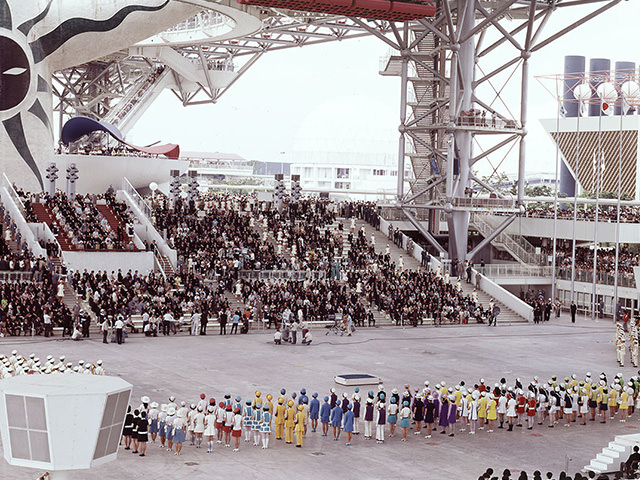
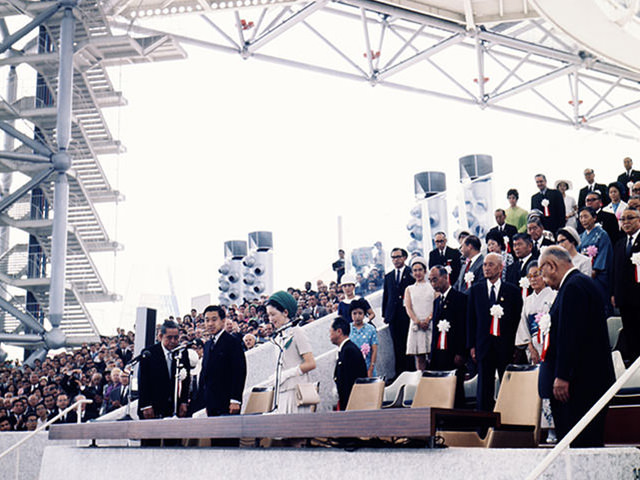
VIPs from across the World
Over 4,800 distinguished guests from countries and regions overseas – from the Eastern and Western worlds – visited Expo '70, and members of the Imperial Household of Japan also attended venues at the Expo several times; there were heart-warming scenes of cordial exchanges between these distinguished guests.
"Progress and Harmony for Mankind" – Exhibiting the Theme (and Sub-Themes)
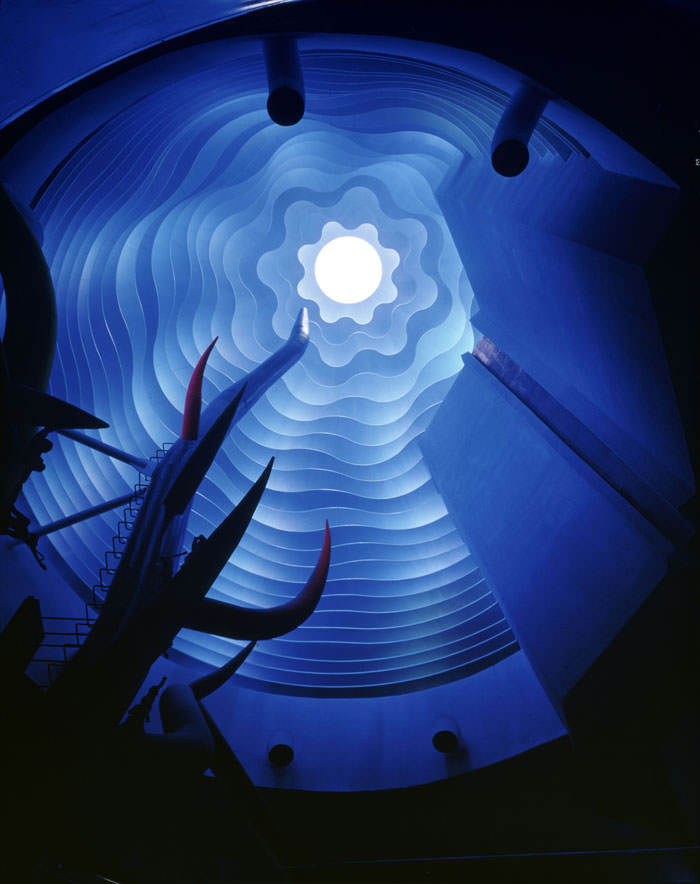
The Theme Pavilion was built to express the integrated theme of Osaka's Expo '70, "Progress and Harmony for Mankind." This central theme supported the coexistence of the two concepts "progress" and "harmony," which is very difficult to achieve, and numerous exhibits conveying the lofty ideals of human beings were displayed. The Tower of the Sun Museum was considered the core of all elements that embraced the spirits of thematic exhibitions, and served as a glorious symbol for the entire Expo '70 site.
Situated almost at the center of the Symbol Zone, where the spirits of the theme were condensed and expressed together, the 70-m-tall Tower of the Sun Museum penetrated through the Big Roof of Festival Plaza and soared high into the sky.
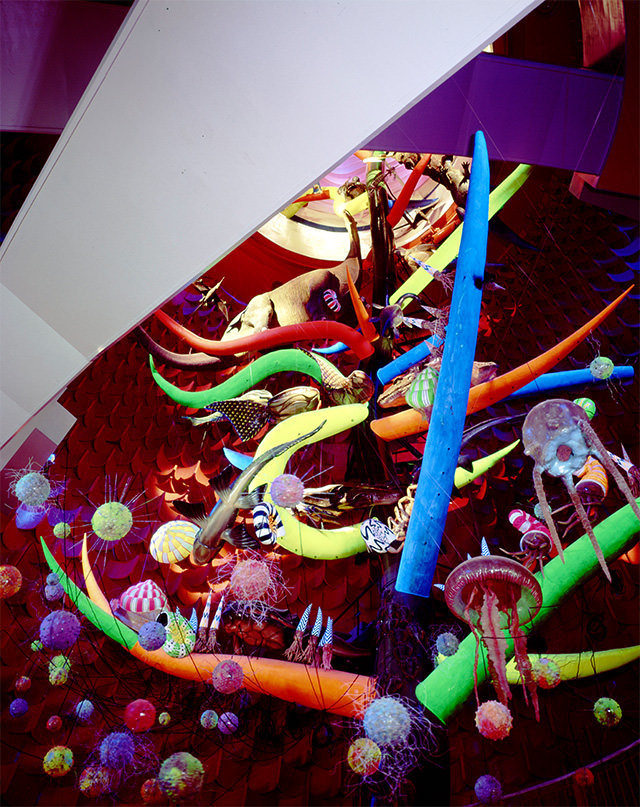
The three exhibition sections, the underground, the ground, and the mid-air, which were centered around the "Tree of Life" inside the Tower of the Sun Museum, dramatically expanded the theme and sub-themes in three-dimensional forms. The dignity of life was spotlighted through exhibits depicting the worlds of the past, the present, and the future, which deeply impressed the visitors.
Pavilions – Expressing the Past, the Present, and the Future
At the 1970 Japan World Exposition, a total of 116 pavilions were set up by international organizations, governments, states and provinces, cities, and companies from 77 countries (the figure excluding the Theme Pavilion and the Japanese Garden), all beautifully expressing the concept of "Progress and Harmony."
Visitors to pavilions queued up in lines, and they – both elderly and young people – sought new worlds through them, generated fresh desires and aims, and developed friendships with each other, in order to create a better world in the future.
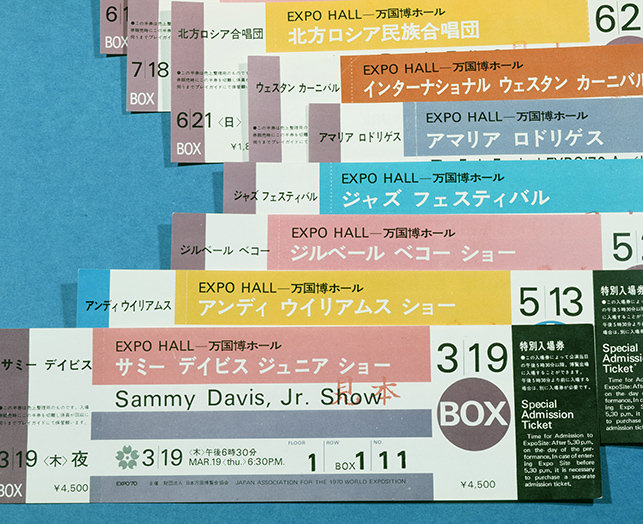
Festivals and Events from around the World
Events conducted gloriously at plazas and halls of the Expo were truly the "Harmony of Mankind" themselves. At Expo Hall, the Water Stage, Festival Hall, open-air theaters, and mainly Festival Plaza, various kinds of events were held; the total number of performances conducted reached 2,880. At Festival Plaza, designed as a "Place for Cordial Exchanges between Humans," a total of 270,000 people from inside and outside Japan appeared to show their performances, and to those performers, a total audience of more than 10 million delivered applause.
Expoland – the Land of Children
Expoland, which was full of dreams, adventures and thrills, made children remember Expo '70 as a "great Expo." Every day during the Expo, this amusement park – which had a land area of approx. 172,500 m² and was divided into six districts, including "Humans' Own Land," "Plaza of Winds and Water," and "Forest of Memories" – was crowded with young people, families, and children.
At Lost Children Centers located at Expoland, female staff looking after lost children and "Child's ID Tags" played important roles during the Expo, among the many unforgettable memories at this "Paradise of Children."
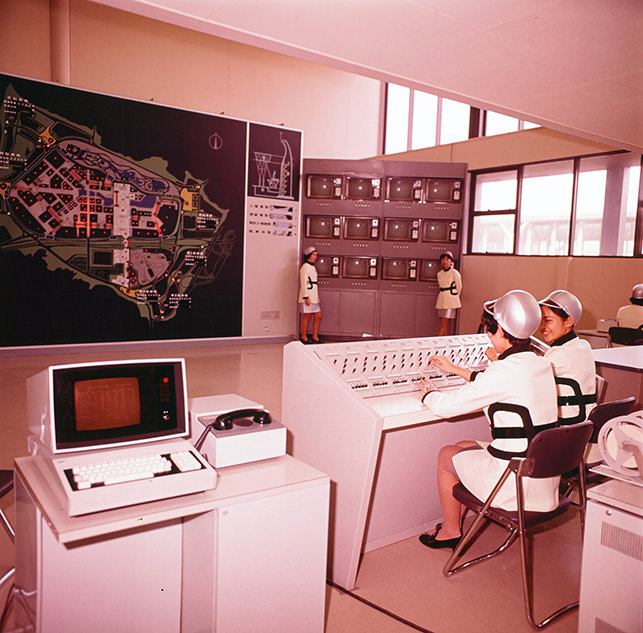
Facilities and Operations Management That Supported Expo '70
The site of Expo '70, which 500,000 to 600,000 visitors entered and left each day, was a "future city" that required high levels of urban functions. The average daily electricity consumption of the Expo site was 900,000 kW, and the total amount of garbage disposed at the site was 400,000 m³. The total electricity consumption of the site was equal to the total amount of electricity used in entire Nara City in Nara Prefecture, while the total amount of garbage disposed at the site was equivalent to that of a city of 600,000 people.
The Operation and Control Center, which stored approx. 5 million pieces of data, the Mass Media Base & Press Center, the Cleaning Management Center, and clinics were in charge of information, hygiene, and first-aid management, while security guard offices and fire departments were responsible for protecting the safety and security of visitors and guests.
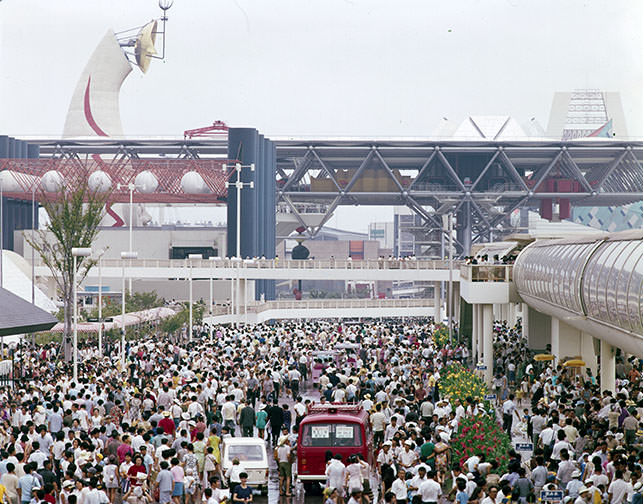
183 days – through Spring, Summer, and Autumn
Atmosphere at Expo '70
Throughout the 183 days of the Expo, fresh new surprises emerged one after another, and touching moments were created all the time.
The total number of visitors to Expo '70 – from all across the world – totaled 64,218,770. Each day, over 830,000 people visited the Expo, and there were even times when limits were set on the number of visitors who could enter the site. During that time, the parking lots at the Expo site, which covered a total area of 750,000 m², were filled with a total of 2,811,995 vehicles. Moreover, there were a total of 48,139 lost children, 125,778 missing persons, 54,154 lost articles, and 11,350 emergency patients (including women who went into labor while visiting the Expo). All these numbers that reflect various occurrences during the Expo simply highlight how successful this international event was.
"Good-Bye" – the Closing of Expo '70
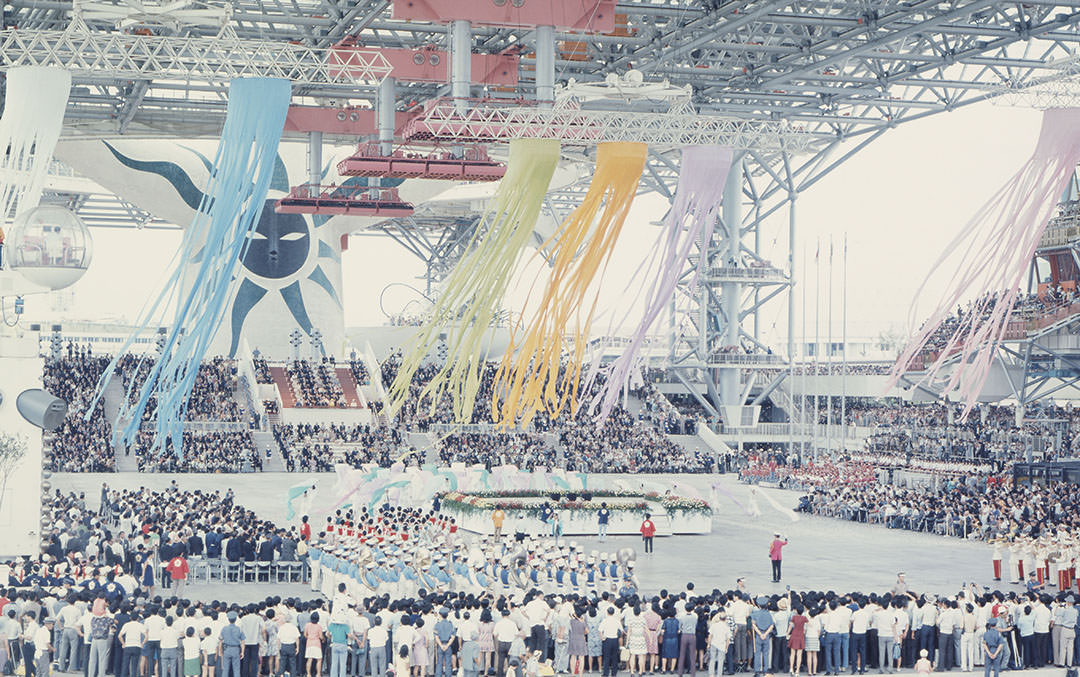
At 11:00 a.m. on Sunday, September 13, 1970, the closing ceremony was conducted; around 6,000 distinguished and invited guests from inside and outside Japan, such as representatives from the governments of the participating countries, attended the ceremony. The electronic message board at the venue said, "Good-bye Expo '70."
Hotaru no Hikari ("Glow of a Firefly"), a Japanese farewell song incorporating the tune of the Scottish folk song Auld Lang Syne, played through speakers at the venue, and the lights of the Tower of the Sun Museum were turned off. At that moment, however, a new journey toward a world of "Progress and Harmony" began; it was the start of a "new future."
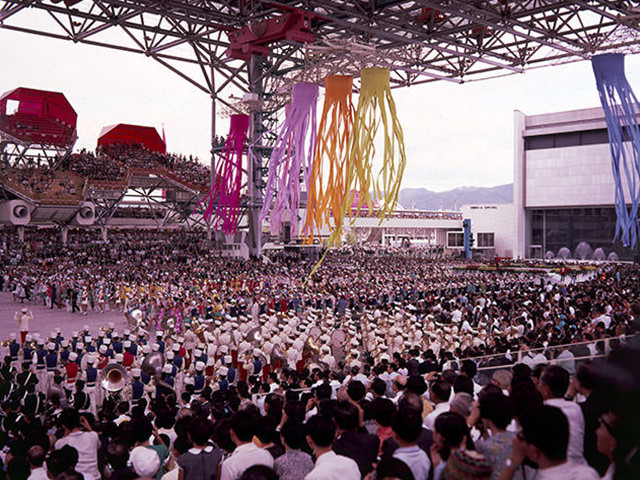
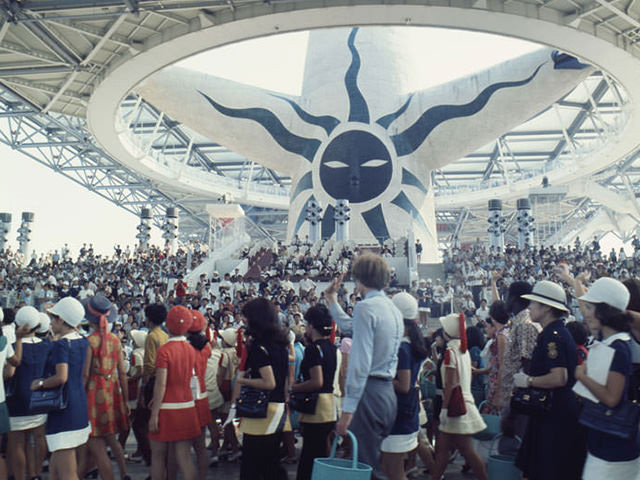
On-Site Staff Members at Expo '70 and Posters of the Expo
